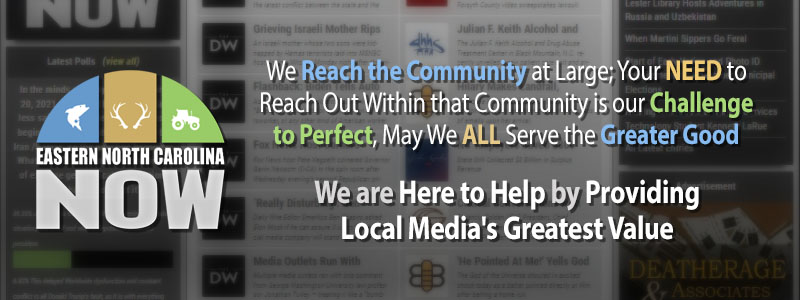Publisher's note: This post, by Rachael Dobi, was originally published in the Transportation section of Civitas's online edition.
A new "public-private partnership" in North Carolina appears to put hundreds of millions of taxpayer dollars at risk while guaranteeing profit for a company that has run into trouble in other states.
The North Carolina Department of Transportation (NCDOT) announced in April that it had selected a contractor to take on the task of widening the congested 26-mile corridor of I-77 north of Charlotte. The project calls for the addition of a high-occupancy/toll (HOT) lane and the conversion of the existing high-occupancy vehicle (HOV) lane into another HOT lane. Cintra Infraestructures, a Spanish company, was selected to design, build, and maintain the improved roadway – and collect the tolls. The term of the contract is 50 years.
The price tag on this project is expected to reach $655 million. NCDOT will contribute $88 million and Cintra will invest $234 million of its own money. Cintra will borrow another $315 million in government-backed loans. The loans are made possible by a public-private partnership that allows the project to qualify for money from the federal government's Transportation Infrastructure Finance and Innovation (TIFIA) program and local government bonds. The remaining $18 million is the estimated interest payments on the loans.[1]
In contrast to a proposal to build general purpose lanes, HOT lane construction can start much sooner because of the financing arrangement, according to supporters of the project. Legislators say it would take 15 to 20 years to raise the money required for general-purpose lanes if the project were fully funded by tax revenue.
HOT lanes would guarantee speeds at least 25-35 mph faster than the general-purpose lanes, advocates say. However, the speed and time savings will come at a price to drivers. Early estimates pegged the maximum total commute charge at about $21 per day – for those making a 52-mile round trip utilizing the entire length of the toll lanes, during peak use hours. NC DOT representatives last week responded by saying those preliminary estimates are high, and it is more realistic that most users would only drive on a portion of the tolled lanes, so the majority of users would pay only a fraction of the $21/day estimate.[2] Furthermore, in an effort to encourage carpooling, high occupancy vehicles with three or more people would be able to use the lanes at no cost.
Beyond the high cost of tolls, there are bigger problems with the I-77 project. Unfortunately, other Cintra-backed toll roads in the United States have run into problems that have left taxpayers footing hundreds of millions of dollars in costs, while failing to end traffic jams, as was originally promised. While it sounds like a bargain for the NCDOT to only have to pay an initial $88 million for the HOT lanes when $170 million was budgeted for road improvements, there are several reasons why it seems more like an $88 million bet that the project won't fail.

First, if Cintra defaults on the government-backed TIFIA loans or local government bonds because of insufficient toll revenue, that's money the taxpayers would have to backfill. In Texas, the public was forced to bail out the contractor who designed the SH 130 toll road southeast of Austin with $100 million in gas taxes after it defaulted on its loan.[3] And, according to news reports, the toll road failed deliver promised traffic relief projections on other highways.
Second, Cintra itself is currently in danger of default, complete with a credit downgrade from Moody's, after it and Australian partner Macquarie took over the operation of an Indiana toll road for $3.85 billion and toll revenues failed to meet even the lowest expectations.
Third, North Carolina is essentially promising Cintra that it won't lose money on the deal. The contract between the state and Cintra states that if toll revenues do not meet the annual projections, NCDOT agrees to pay up to $12 million per year to make up for that, using the "Developer Ratio Adjustment Mechanism" (DRAM). Total DRAM public contributions are capped at $75 million.[4] So this adds a potential $75 million to what the public may have to pay, which seems reasonably likely if the I-77 project flops. In total, NC taxpayers are exposed to roughly $400 million in potential liability for this "partnership" with Cintra.
Not only is the use of public funds questionable, but even if the project succeeds financially, opponents, like the group Widen I77, say congestion won't even be adequately reduced. Because only those willing or able to pay the tolls would use the HOT lanes, many people would still be stuck in the crowded general-purpose lanes.
The taxpayer money spent to enable this public-private partnership with Cintra to be "viable" will no longer be available in the current year, and every year afterwards for other highway projects. This could end up like the Austin, TX project with a financially failed project, no measurable impact on traffic congestion and less money available for other road projects.
Widening I-77 is past due and ought to be a priority for NCDOT, but decisions about funding and project design need to be made after thorough consideration and the analysis should be honest about the potential total cost to taxpayers, not just the best case scenario estimate.
Sources:
- USA. State of North Carolina Department of Transportation. Widen I-77. By David Tryerar and Rodger Rochelle. N.p., 25 Apr. 2014. Web. 17 June 2014.
http://wideni77.files.wordpress.com/2014/06/i-77-jlto-report-4-25-14.pdf
- Boraks, David. "New Information Rekindles Debates Over I-77 Toll Lanes," Davidson News.Net, June 17, 2014. Available online at: http://davidsonnews.net/blog/2014/06/17/new-information-rekindles-debate-over-i-77-toll-lanes/
- Clifton, Brant. "Spanish Toll Co.'s Recent Woes a Bad Omen for NC's HOT Lane Plans?" Daily Hay Maker. N.p., 22 Apr. 2014. Web. 17 June 2014. http://dailyhaymaker.com/?p=7728
- "Answers." Widen I77. N.p., 10 June 2014. Web. 17 June 2014. http://wideni77.org/2014/06/10/answers/#_ftnref2
























